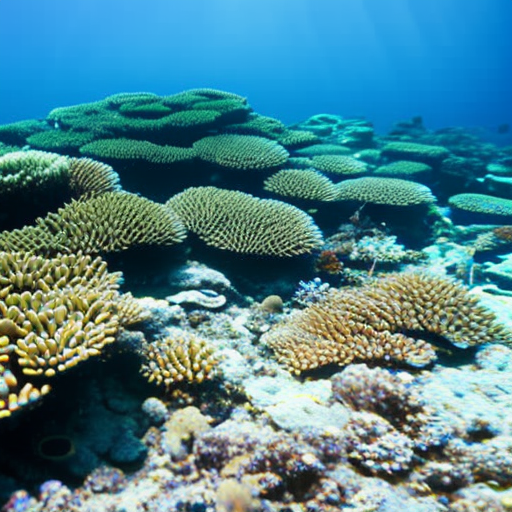Ocean Acidification: A Threat to Marine Life
Ocean acidification is a process that occurs when carbon dioxide (CO2) from the atmosphere dissolves into seawater, leading to a decrease in the pH of the ocean. This phenomenon is primarily caused by human activities, such as the burning of fossil fuels and deforestation, which release large amounts of CO2 into the atmosphere. As a result, the oceans are absorbing more CO2, leading to significant changes in their chemistry.
Causes and Impacts
The main driver of ocean acidification is the increased concentration of CO2 in the atmosphere. When CO2 dissolves in seawater, it forms carbonic acid, which releases hydrogen ions, reducing the pH of the water. This decrease in pH has far-reaching consequences for marine life.
One of the most significant impacts of ocean acidification is the reduction in carbonate ions, which are essential for the formation of calcium carbonate, a key component of shells and skeletons of many marine organisms. As the availability of carbonate ions decreases, it becomes more difficult for these organisms, such as corals, shellfish, and some plankton species, to build and maintain their protective structures. This can lead to weakened shells, slower growth rates, and increased vulnerability to predation and disease.
Furthermore, ocean acidification can disrupt the balance of marine ecosystems. Coral reefs, for example, provide habitat for a vast array of marine species. The decline of coral reefs due to acidification can have cascading effects on the entire ecosystem, impacting fish populations, coastal protection, and tourism.
Current and Future Trends
Ocean acidification is an ongoing process that is occurring at an unprecedented rate. Since the beginning of the Industrial Revolution, the pH of the ocean has decreased by approximately 0.1 units, representing a 30% increase in acidity. If CO2 emissions continue to rise at current rates, it is projected that the pH of the ocean could decrease by another 0.3 to 0.4 units by the end of this century.
The impacts of ocean acidification are not limited to marine organisms. It can also affect the livelihoods and well-being of human communities that depend on the ocean for food and income. For example, shellfish aquaculture, which is a vital industry in many coastal regions, is particularly vulnerable to acidification. Larval oysters, mussels, and clams are especially sensitive to changes in pH, making it difficult for them to survive and grow.
Addressing the Issue
To mitigate the impacts of ocean acidification, it is crucial to reduce CO2 emissions and limit the amount of carbon dioxide released into the atmosphere. This requires a global effort to transition to cleaner and more sustainable energy sources, as well as to implement policies that promote the conservation and restoration of marine ecosystems.
In addition to reducing CO2 emissions, some scientists are exploring other strategies to combat ocean acidification. For example, researchers are investigating the potential of seagrass and kelp beds to absorb and store CO2, thus helping to buffer the effects of acidification. Furthermore, there is ongoing research into selective breeding and genetic engineering of marine organisms to enhance their resilience to changing ocean conditions.
Conclusion
Ocean acidification poses a significant threat to marine life and the health of our oceans. The decrease in pH and carbonate ions can have far-reaching consequences, including the weakening of shells and skeletons, disruption of marine ecosystems, and impacts on human communities. To address this issue, it is crucial to reduce CO2 emissions and implement strategies to protect and restore marine ecosystems. By taking action now, we can help mitigate the impacts of ocean acidification and ensure the long-term health and sustainability of our oceans.












